All About Leather
Understanding Different Types and Manufacturing Processes
Leather, a popular material used in various products, carries an inherent appeal due to its durability and timeless aesthetic. When shopping for leather goods, you may come across the term "Genuine Leather," which can create the impression of high quality. However, it's important to understand that "Genuine Leather" is actually a low-grade type of leather. In this article, we will explore different types of leather, including their characteristics, manufacturing processes, and the animals they are sourced from.
Types of Leather
Leather can be classified into several types based on its quality and manufacturing processes. The major types of leather include:
1: Full Grain Leather
2: Top Grain Leather
3: Split Grain Leather
4: Bonded Leather
Full Grain Leather
Full Grain Leather is the highest quality type of leather available. It is made from the top layer of the animal hide and retains the natural grain and imperfections, giving it a unique and authentic look. The natural grain contributes to the strength and durability of the leather, making it highly resistant to wear and tear. Full Grain Leather develops a beautiful patina over time, enhancing its character and appeal.
Top Grain Leather
Top Grain Leather is also made from the top layer of the animal hide but undergoes additional processing to remove imperfections. This results in a smoother and more uniform appearance compared to Full Grain Leather. While it may lack the natural grain of Full Grain Leather, Top Grain Leather is still of high quality and offers excellent durability.
Split Grain Leather
Split Grain Leather is derived from the lower layers of the animal hide. This type of leather is created by splitting the hide into multiple layers, with the top layer used for Full Grain or Top Grain Leather. Split Grain Leather is more affordable but generally less durable and prone to wear and tear.
Bonded Leather
Bonded Leather is the lowest quality type of leather. It is made by combining leftover leather scraps and fibers with a bonding agent. While it may contain a small percentage of genuine leather, Bonded Leather lacks the durability and longevity of other types. It is often used in products where cost is a major factor.
Characteristics of Leather
Leather can exhibit various characteristics, adding to its uniqueness and appeal. Some of the common characteristics include scars, bug bites, and variations in color.
Scars
Leather may have scars that result from injuries or marks on the animal's hide. These scars can contribute to the character and individuality of the leather product. Scars that have not healed can be felt with the fingers, while scars that have healed may dye slightly lighter, highlighting the distinctiveness of each piece.
Bug Bites
Bug bites can also leave marks on the leather, often appearing as round spots that dye slightly lighter. These subtle imperfections add to the charm of the leather, showcasing its natural origins.
Color Variations
Leather can exhibit variations in color due to the natural characteristics of the animal hide. Differences in tone and shading create a visually interesting and dynamic look, making each leather item truly one-of-a-kind.
Animals Used for Leather Production
Leather can be sourced from various animals, with cattle being the most commonly used. However, leather can also be made from other animals, including pigs, goats, sheep, deer, snakes, alligators, ostriches, and kangaroos. Each type of leather carries its own unique characteristics and qualities.
Cattle Hide
Cattle hide is the most widely used source for leather production. Cowhide offers exceptional durability and strength, making it suitable for a wide range of products, from shoes to furniture.
Water Buffalo Hide
Water buffalo hide is another popular source of leather, particularly in Asia. It is known for its ruggedness and toughness, making it ideal for products that require high durability, such as motorcycle jackets or work boots.
Other Animal Hides
Leather can also be derived from various other animals, each with its own distinct qualities. For example, pigskin leather is known for its softness and flexibility, while snakeskin leather offers a unique texture and pattern. The choice of animal hide depends on the desired characteristics of the final product.
Leather Manufacturing Processes
The production of leather involves several manufacturing processes, each resulting in a different type of leather. Let's explore some of the common tanning processes:
1: Vegetable Tanning
2: Chrome Tanning
3:Alum Tanning
4: Aldehyde Tanning
5: Brain Tanning
6: Chamois Tanning
7: Synthetic Tanning
8: Rawhide
Vegetable Tanning
Vegetable tanning is a traditional and environmentally friendly process that uses natural materials, such as tree bark, to tan the leather. This process produces a characteristic brown color and is the only method suitable for leather carving and stamping.
Chrome Tanning
Chrome tanning is a widely used process that utilizes chromium salts to tan the leather. It results in a more supple and pliable leather compared to vegetable tanning. Chrome-tanned leather is also highly resistant to water and retains its shape well.
Alum Tanning
Alum tanning involves the use of aluminum salts to transform the animal hide into leather. Unlike other tanning methods, alum tanning does not use tannic acid. If soaked in water, alum-tanned leather reverts to rawhide due to the removal of alum salts.
Aldehyde Tanning
Aldehyde tanning utilizes compounds like glutaraldehyde or oxazolidine to tan the leather. This process is often used for products like infant shoes and automobile interiors due to its softness and flexibility.
Brain Tanning
Brain tanning is a labor-intensive process that uses emulsified oils, often derived from animal brains, to tan the leather. This method produces exceptionally soft and supple leather, making it ideal for garments, such as moccasins or gloves.
Chamois Tanning
Chamois tanning involves the use of marine oils, such as cod oil, which oxidize to produce aldehydes that tan the leather. This process gives the leather a characteristic color and texture.
Synthetic Tanning
Synthetic tanning utilizes aromatic polymers, such as Novolac or Neradol types, to tan the leather. This process offers flexibility and versatility, allowing for the creation of unique leather finishes and textures.
Rawhide
Rawhide is not technically tanned leather but rather a preparation method for leather. It involves scraping the animal hide thin, soaking it in lime, and then stretching it while it dries. Rawhide is commonly used for lacing, stitching, and making dog chews.
Conclusion
Understanding the different types of leather and their manufacturing processes is essential when shopping for leather goods. Full Grain Leather and Top Grain Leather are high-quality options that offer durability, while Split Grain Leather and Bonded Leather are more affordable but may lack the same level of longevity. Remember that leather can come from various animals, each with its own unique characteristics. Additionally, the tanning process can significantly impact the final appearance and qualities of the leather. So, the next time you consider purchasing a leather product, you'll be equipped with the knowledge to make an informed decision.



